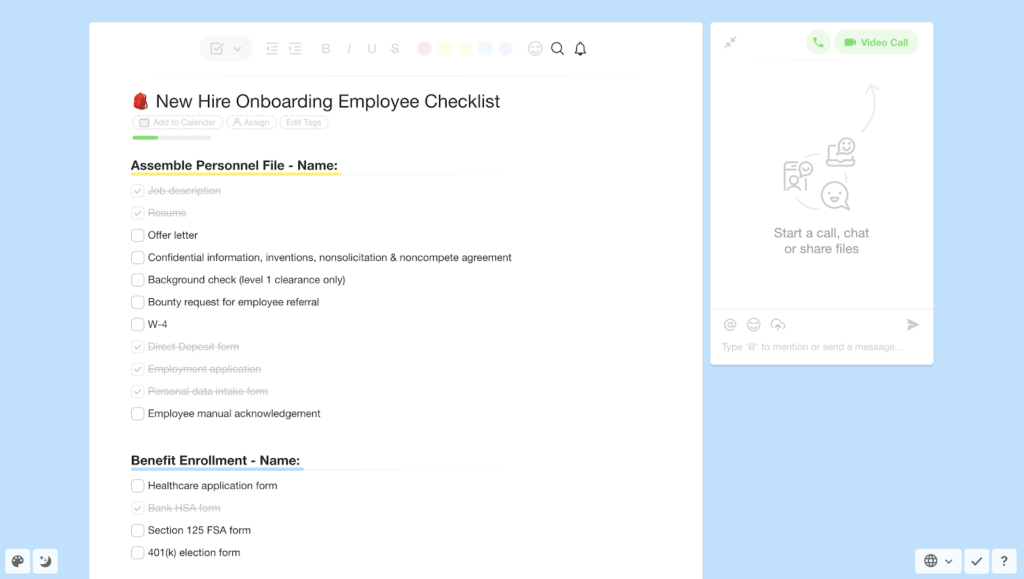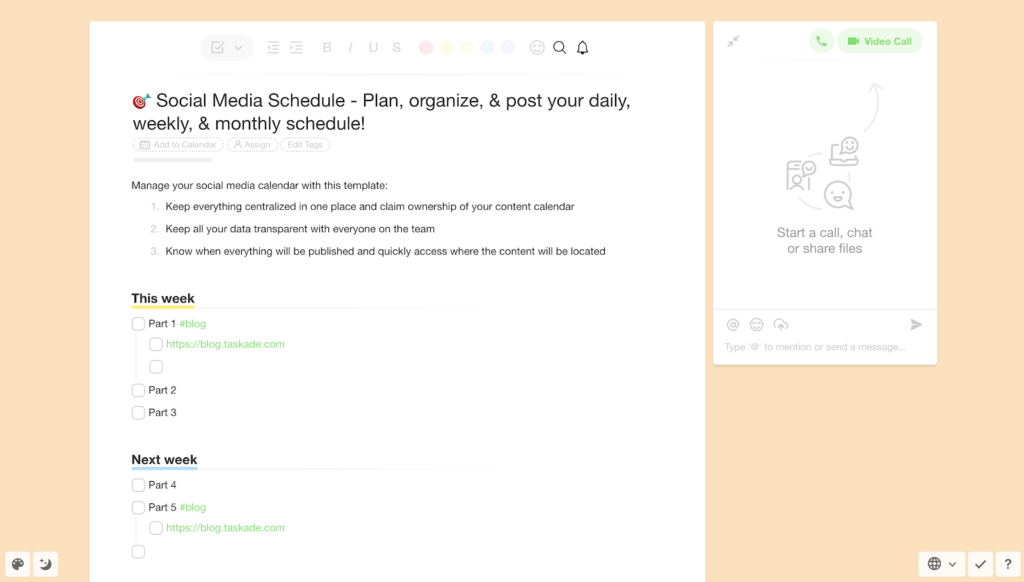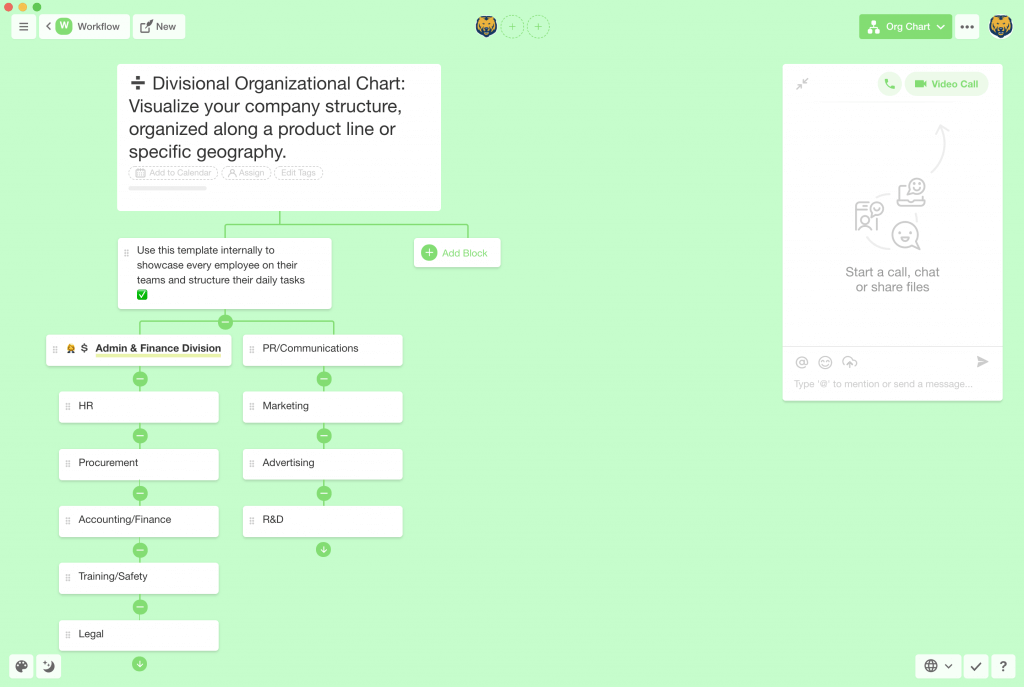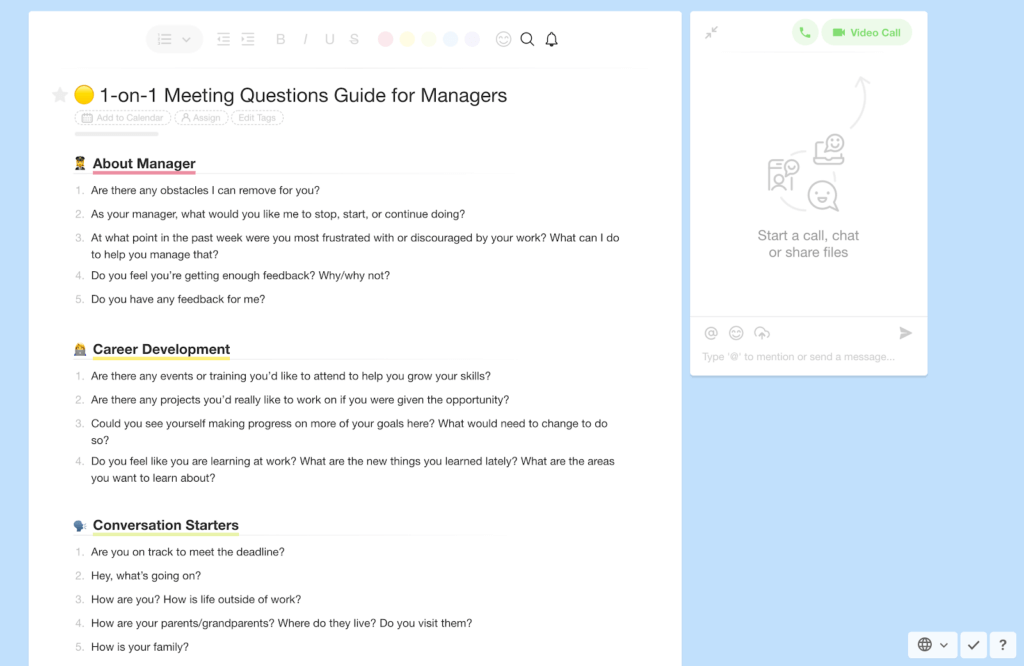The game is on. Businesses around the world are joining the “remote culture” to embrace the benefits of distributed teams. According to estimates, as much as 50% of the global workforce may go fully remote by 2020. 🙊
Not so long ago, we published the article “Reverse-Engineering Productivity for Remote Teams. Do More With Less” that detailed how already established remote teams can overcome common productivity problems (be sure to check it out!). Today, we go back to the basics and explain the core concepts of distributed work.
Are you a startup owner or a manager planning to assemble a 100% remote dream team? Here’s everything you need to know to get started.
👨💻 What Are Distributed Teams Anyway?
Despite the growing popularity of remote work, some people still find the concept of distributed teams confusing. “Does it mean you guys never see each other face-to-face?”, “what about coffee breaks and water-cooler meetings?”, “How can you *not* miss that?!” 🤯
Ok. Let’s start with the basics.
As the name suggests, distributed teams are decentralized and location-independent. In other words, it means their members can work from any part of the world and still get the work done.
A wee note: Distributed teams don’t have to consist of full-time employees (FTEs) only. They might as well be made up of freelance workforce paid hourly or daily rates. As long as members communicate with each other and collaborate on a shared goal, these groups go into one bag. 👜
So, how do you call companies that combine distributed and co-located (local) workforce? The simple answer is “hybrids”. Truth be told, most organizations these days can be classified as such. Companies like Google, Microsoft and Amazon belong to that ilk too.
⚡️ 6 No-Nonsense Benefits of Distributed Teams
1. Access to Limitless, Diverse Talent Pools
When it comes to hiring talent, distributed will always outperform their on-site counterparts. When you hire locally, there’s a limited number of professionals you can invite for an interview. Sure, some will be happy to commute, but you can only get so far before facing a talent gap.
Distributed teams, on the other hand, can source from other cities, states, countries or even continents. Not only are they able to do it quicker and more efficiently, but they can also access the top 1% of high performers who only sign up for flexible work arrangements.
Let’s say your dream is to set up a mobile app development company. Even if your business HQ is in Fairbanks, Alaska, you don’t have to haul in iOS and Android developers across the country. You’re free to embrace the distributed models and hire the best professionals online (no offense, Fairbanks!). ❄️

Onboarding new employees? Use the Onboarding template to track your progress
2. Increased Employee Wellbeing and Retention
It’s no secret that happy employees stick with their employers for longer. It’s also no secret that becoming a part of a distributed team is a dream come true for many.
According to Buffer’s 2019 “State of Remote Work Report”, there are several reasons why employees love working remotely, the chief being a flexible schedule (47%). The second and third most important factors are the ability to work from anywhere (30%) and spending extra time with the family (13%).
Perhaps, the most “fun” part of remote work is the power of choice. Remote employees can set their own schedules, decide how and where they work and cultivate a workflow they feel the most comfortable with.
So, wrapping it all up:
- 🕓 No commute and traffic jams = better punctuality and attendance
- 💆♂️ More time for off-work activities = self-development and opportunities to let off some steam
- 🥙 Work on one’s own turf = ability to create a dream office setup + no quarrels over stolen lunch
- 💖 Isolated environment =fewer sick leaves and improved productivity
3. Distributed Teams Are Cost-Efficient
This one’s a treat for cost-conscious managers and startup founders. If you’re on a shoestring budget and have to cut expenses wherever possible, building a 100% distributed may help you avoid excessive spending. Here’s how.
Furnishing an office is a bottomless money pit. There are lease, utilities and maintenance bills you have to pay each month. And don’t forget you need software, hardware, office furniture and a stable internet connection to get things off the ground. When you go for a fully distributed team, you can cross these items off your shopping list.
Most of the time, remote employees have their own hardware and a basic home-office set up so initial costs following a hire are minimal. You may still need to buy additional software licenses, but that’s only a fraction of the bill you’d have to foot for each new physical workspace.
“But what if my employees don’t have a proper home office and can’t afford the upgrade?”
Some distributed companies, Automattic, the makers of WordPress being one of them, offer home office allowances or offset the costs of co-working space subscriptions. Others rent essential office equipment and ship it straight to new hires. For instance, FirstbaseHQ came up with a subscription-based model that allows distributed organizations to provide necessary hardware at a fraction of the cost of regular office setup. 🖨
4. Business Is Always On, 24/7
In the age of instant communication, customers perceive 24/7 support as their undeniable right, come hell or high water. While providing around-the-clock communication is a no-brainer for big companies with established infrastructure, small and medium-sized businesses with an appetite for international expansion need workarounds to pull it off.
For instance, if your startup has its HQ in Paris (Central European Time) but sells to customers on the West Coast (Pacific Standard Time), business hours don’t overlap and create a 9-hour blind spot. Now, according to Murphy’s law, it’s very likely somebody will request assistance exactly when all your employees will be catching some ZZZs. 🛏
Not good.
When you run a distributed team, you’re free to hire internationally and put customer reps exactly where and when you want them to be. Why keep local employees at the office in the middle of the night when you can invest in talent that’s in the right time zone, fresh, well-rested and ready for any emergencies?
And let’s not forget about work continuity. Given the time-zone differences, many distributed teams can boast an impressive 99.9% uptime. When a freelance copywriter in London calls it a day, an editor in Seattle is just getting ready to savor his morning cup of coffee. Handoffs like this help avoid backlogs and keep the show running around the clock. ⏰

If you’re publishing content across time zones, you can use the Social Media Schedule template to keep track of your content calendar
5. Distributed Teams Are Easily Scalable – Up or Down
The regular hiring practices are a hassle. Not only are recruitment processes hacked into several stages, but they also require an on-site presence for the candidates who make it through initial video interviews. At best you’re up for several weeks of back and forths before you find the right person for the job.
With distributed teams, hiring is much more flexible, especially when you only need temporary, ad-hoc help instead of full-time engagement. Need a marketing expert who will handle your social media? Post an ad or search online and you’ll find and place the right person in a matter of hours.
The same goes for scaling down. When you hire independent contractors and freelancers, work arrangements are usually much more flexible so you can regroup and reorganize your team as needed. It also means your employees don’t have to pack their staff and u-haul every time they find a new job. 🚚
6. Distributed Teams May Be the “Pill” for Local and Global Problems
On a more serious note, if there’s one thing the ongoing Coronavirus outbreak has made clear, it’s that fully distributed teams have the potential to thrive, despite global and local crises.
In recent days, companies like Amazon, Google, Facebook and Twitter have announced they’re actively encouraging employees to work from home if possible. Because of the panic caused by COVID-19 Coronavirus, some businesses have been forced to shut down local operations until the situation is safely contained.
It seems though the current situation is merely a nudge towards WFH (work from home) and the transition has been in the works for quite some time. In an official blog post, Twitter admitted that “while this is a big change for us, we have already been moving towards a more distributed workforce that’s increasingly remote. We’re a global service and we’re committed to enabling anyone, anywhere to work at Twitter.”
But health concerns are only part of the picture. Going remote enables telecommuting professionals to find and engage employers in any part of the world; this can mitigate employment problems when the job market shifts and local employment opportunities become scarce. 📌
7. Distributed Teams Are More Green
Finally, let’s not forget about the environmental aspects of remote work. No commuting means that less carbon dioxide and toxic fumes end up in the atmosphere. And with no AC and heating required to keep vast office spaces cozy, energy consumption goes significantly down.
Other “green” aspects of going remote include:
- 📑 Reduced paperwork. Forget about paper training materials, conference notes and printed presentations (crazy but some people still do that!). With distributed teams, communication and document exchange happens electronically, effectively reducing paper waste
- 🚗💨 Decreased consumption of fossil fuels. Remote employees don’t travel to the physical office so they clock in fewer miles and use less gas. Back in 2015, Xerox’s remote work policy contributed to reducing gas consumption (4.6 million gallons) and curbing greenhouse gas emissions (down by an estimated 40,000 metric tonnes)
- 🛣 Positive impact on transport infrastructure. According to Global Workplaces analytics, distributed teams can save hundreds of millions of dollars of taxpayers’ money in road maintenance by simply clocking in fewer miles
And the best part?
The positive effects of telecommuting compound. If more organizations join the “remote culture”, the future might look a bit less…smoggy. And that’s a good start, isn’t it? ☀️
🏃♂️ 7 Steps to Success: How to Build a Distributed Team?
Ok. Running a 100% distributed business that spans multiple departments and hundreds of employees around the world is not exactly easy. The good news is you don’t have to build an empire in one go. Most distributed teams start small, often with two or three co-founders working remotely.
Here’s a simple checklist that will help you get started:
1. Decide on the Team Size
How big should a distributed team be? How many remote workers can you hire and still keep the finger on the pulse? Well, as long as you can handle accounting, legal matters and put a solid chain of command in place, the sky’s the limit.
For instance, companies like Automattic and Buffer consist of 100% distributed teams but their ranks vary in numbers. While Buffer has 80 remote employees, the team behind WordPress, WooCommerce and JetPack counts 1,000+ heads in 76 countries (according to Automattic’s website).
When you build a distributed team, focus on skill diversity instead. You want to hire strategically so skillsets complement each other. You also want to group remote employees into small, self-sustainable groups that can work autonomously and deliver results without outside help. 🤹♀️

The Organizational Chart template lets you visualize the structure of your organization
2. Find the Right People for the Job
We hate to be a party popper, but…not everybody’s fit for remote work. Some people just need physical office space, face-to-face interactions and daily supervision to be productive. And there’s nothing wrong about that. But when you hire for a distributed team, you need to be *extra* careful about your candidates.
So, what type of people are you looking for?
- 👀 Independent and motivated for work, even without close supervision
- 🤔 Able to make autonomous decisions using available information
- 💁🏽 Ready to take responsibility and own up to mistakes
- 👍🏻 Trustworthy and with a strong work ethic
Remember that trust goes both ways. Encourage your employees to voice their concerns and give feedback whenever friction happens. You want to communicate as often as possible and proactively give them all the answers they need, even before they come back to you with questions.
3. Master The Art of Communication
Communication is *THE* thing for distributed teams. For better or worse, remote employees can’t rely on non-verbal cues so it’s important that they make the most of the available channels.
According to Jennifer Stine of MIT, “close attention to relationship-building and a process to ensure good communication is really important. When the group or the organization has a strong culture that supports collaboration, this can stand in for many of the detailed steps—it really helps (…).”
Since your team won’t be able to socialize during coffee breaks or water-cooler meetups, you need to ensure they can interact with each other without friction. Asynchronous e-mail comms, live chats and video conferencing are staples in every distributed organization.
You should also dedicate some time for weekly or monthly 1-on-1s so managers can talk things over with each team member (grab a Taskade template for that):
- 👍 Are they satisfied with their working conditions?
- 🧱 Is there anything that prevents them from delivering results?
- 🤜✨🤛 Are they getting along with the rest of the team?
- 💡 Do they need more guidance or supervision?

The 1-on-1 template comes packed with useful questions
Productivity pro tip: Be careful! Virtual conferences can be the same time sinks as physical HQ meetups. There’s no point running one if you don’t have a clear plan of what you want to discuss. Make sure to create an agenda and share it with the team before jumping on a call and encourage other attendees to do the same. 📝
And don’t forget occasional get-togethers! While fully distributed teams don’t have many opportunities for BBQs, it’s probably not too much of a hassle to hit the road once or twice a year and have fun at a company retreat. 🛫
4. Set Realistic Schedules That Suit Everybody
Scheduling for distributed teams operating within one time zone is super easy. Everybody lives and works by pretty much the same business hours so you don’t have to postpone meetings, wait for email replies or worry you’ll wake somebody up.
But when distributed teams work across time zones, even if the difference is just an hour or two, it takes a dash of brainwork to figure out a realistic schedule that’d make everybody happy.
If you’re racking your brain trying to figure out if your employees are losing an hour or gaining an hour, you should block permanent overlap time for meetings and strategic discussions.
With a designated, recurring timeframe set in stone calendars, your team will always know when they can expect a conference call or… use a Taskade template for a brainstorming session! 🔔
5. Create and Cultivate a Strong Company Culture
Every organization, be it a business, government body or a non-profit, has a unique organizational culture (a.k.a. company culture), a philosophy that guides its internal and external actions.
So, how to make sure your distributed employees care about these things? After all, they’re thousands of miles away from the HQ, isolated from the corporate lingo and weekly standups. Without a direct tap into company life, your remote workforce may feel marginalized and not a part of the family.
Start with the basics:
- 📭 Create an internal email newsletter and share internal news, interesting articles, team updates and project progress. The important part? Be brief and weave in humor. Nobody wants to read long-winded emails written in “corporate” lingo
- 🎉 If your company has a central HQ, consider inviting new hires for a week or two of onboarding and “acclimatization.” It’ll help them get comfortable and feel the vibes of your business
- 📈 Don’t skimp on your remote workforce. They may not be regular visitors at company premises but that doesn’t mean they should be treated differently in terms of opportunities for growth and education. If you provide courses and job training to co-located employees, think of the remote folks as well and give them access to similar perks
6. Give Your Distributed Team the Right Tools
“Which collaboration tool is the best for my remote employees?”, “what communication channels should they use to communicate without friction?”, “how to make sure everybody’s always on the same page and up-to-date with projects?”
These are only some of the questions startup owners and managers ask themselves when going 100% remote. Since your team will be using those tools around the clock, it makes perfect sense to be particularly picky and test-run a handful of options before committing.
- 🎨 Remember that no distributed team can thrive when it’s “to each his own”. If John from marketing keeps his leads in Excel and Sally keeps hers in a CRM, they won’t find a common tongue. The same goes for project-management platforms, file storage and sharing documents
- 📬 Don’t rely on e-mail too much. It’s great for quick conversations, setting the stage or sending out internal newsletters. But when you treat e-mail like a chat, file exchange service or a to-do list, things go snafu really quickly
- 🥳 Be consistent when creating workflows. Don’s jump from one platform to another only because it comes with a bunch of “cool” features. Nobody’s going to use them if the software is unintuitive and clunky. Your team needs to feel comfortable and genuinely enjoy the tools you give them
Want to learn more about creating workflows? Check Taskade’s article explaining Getting Things Done (GTD) for distributed teams!
🐑 Let’s Sum It Up
“I don’t want flexibility and less supervision at work,” said no one, ever. Here’s the thing — we’ve come to like remote work and there are no signs of cubicles getting back in the good graces. Not that they had much glamor in the first place!
Taskade is proud to be a part of the emerging remote culture and contribute to building the workforce of tomorrow. If you’re looking for a unified workspace with project-management, integrated chat and video communication, and a handy task list for your team, join us today!
🤖 Custom AI Agents: Streamline team workflows by deploying custom AI agents that manage and execute tasks in the background.
🪄 AI Generator: Structure brainstorming sessions, meetings, and projects with AI-generated organizational layouts.
✏️ AI Assistant: Use the AI assistant to plan, draft, and refine team documents while getting insights for collective improvement and synergy.
🗂️ AI Prompt Templates Library: Tap into a diverse library of AI prompt templates for all kinds of team and individual projects.
And much more…


